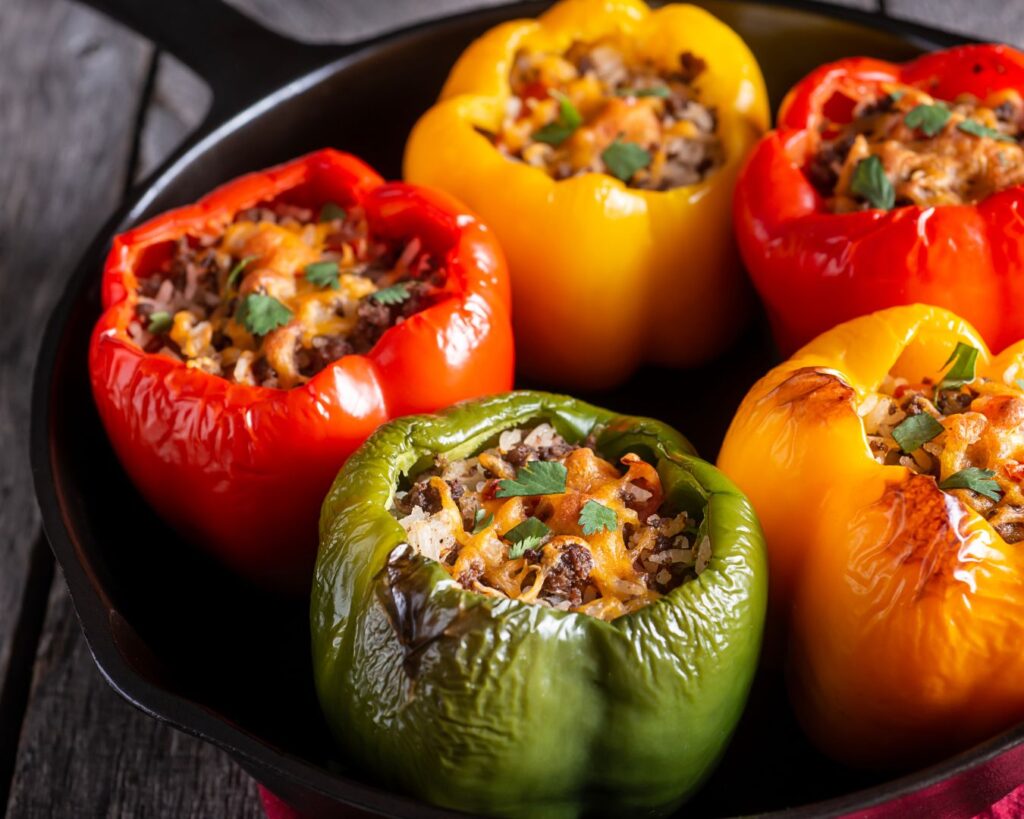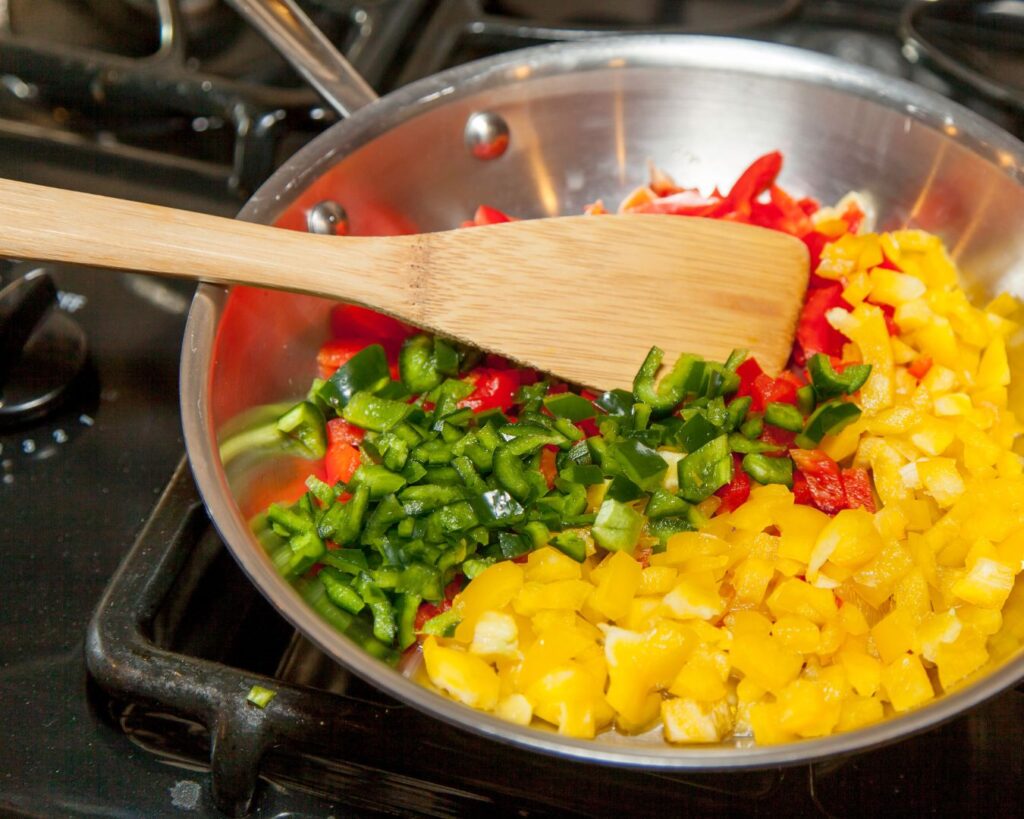Cooking with Peppers to Add Flavor and Heat
Peppers are a versatile and flavorful ingredient that can elevate any dish. From sweet bell peppers to fiery habaneros, these colorful vegetables add depth, texture, and heat to your meals. Whether you prefer a mild kick or an intense burn, cooking with peppers is a great way to experiment with flavors and spice up your culinary creations. In this blog post, we’ll explore the different types of peppers, how to use them in your cooking, and tips for balancing heat and flavor.

Types of Peppers
- Bell Peppers:
- Flavor: Sweet and mild, with no heat.
- Uses: Bell peppers are perfect for stuffing, grilling, sautéing, and adding to salads or stir-fries. Their vibrant colors—green, red, yellow, and orange—make them a visually appealing addition to any dish.
- Jalapeños:
- Flavor: Mild to moderate heat, with a fresh, green flavor.
- Uses: Jalapeños are great for adding a little heat to salsas, guacamole, and chili. They can also be stuffed and baked or pickled for a tangy, spicy snack.
- Serrano Peppers:
- Flavor: Hotter than jalapeños, with a crisp, bright flavor.
- Uses: Serrano peppers are commonly used in Mexican cuisine. They can be added to sauces, salsas, and marinades, or chopped and sprinkled over tacos for an extra kick.
- Poblano Peppers:
- Flavor: Mild to moderate heat, with a rich, earthy flavor.
- Uses: Poblanos are often roasted and used in dishes like chiles rellenos, or blended into sauces like mole. They can also be chopped and added to soups, stews, and casseroles.
- Habanero Peppers:
- Flavor: Very hot, with a fruity, citrusy flavor.
- Uses: Habaneros are perfect for adding intense heat to sauces, marinades, and salsas. Use sparingly, as their heat can be overwhelming. They pair well with tropical fruits like mango and pineapple.
- Cayenne Peppers:
- Flavor: Hot and slightly smoky.
- Uses: Cayenne peppers are commonly dried and ground into a powder. This spice can be used to add heat to soups, stews, sauces, and spice blends like chili powder and Cajun seasoning.
- Ghost Peppers (Bhut Jolokia):
- Flavor: Extremely hot, with a slow-building heat.
- Uses: Ghost peppers should be used with caution due to their intense heat. They are often used in very spicy sauces, chutneys, and as a challenge for those who love extreme heat.

Cooking Tips
- Balancing Heat and Flavor:
- When cooking with hot peppers, it’s important to balance the heat with other flavors. For example, adding a touch of sweetness (like honey or sugar) can help mellow out the spiciness. Acidity from lime juice or vinegar can also balance the heat and add brightness to the dish.
- Controlling the Spice Level:
- The heat in peppers comes from capsaicin, which is concentrated in the seeds and ribs (the white membrane inside the pepper). To reduce the heat, remove these parts before cooking. Alternatively, leave them in if you want to increase the spice level.
- Handling Hot Peppers:
- Always wear gloves when handling hot peppers to avoid getting the capsaicin on your skin, which can cause irritation. If you do come into contact with the oils, wash your hands thoroughly with soap and avoid touching your face, especially your eyes.
- Roasting Peppers:
- Roasting peppers brings out their natural sweetness and adds a smoky depth to their flavor. To roast, place the peppers directly over an open flame or under the broiler until the skin is charred. Then, place them in a bowl covered with plastic wrap to steam, which will make it easier to peel off the skin.
- Pairing Peppers with Other Ingredients:
- Peppers pair well with a variety of ingredients. Try combining them with onions, garlic, tomatoes, or cheese for a classic flavor combination. For a unique twist, pair them with fruit like pineapple or mango, or mix them into chocolate-based dishes for a spicy-sweet treat.
Peppers are a dynamic ingredient that can add both flavor and heat to your dishes. Whether you’re looking to enhance a simple meal or create something bold and spicy, the variety of peppers available means there’s something for every palate. Experiment with different types of peppers in your cooking, and don’t be afraid to mix and match to find your perfect balance of heat and flavor. Happy cooking!

